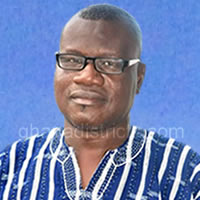The District has a total road network of 607.44km. This is made up of 156km of trunk roads radiating from the District capital, Bimbilla and 260 km of engineered feeder roads,110.44km of unengineered feeder roads which are usually farm tracks and 81 km of partially engineered roads.
Non of these roads are tarred. The trunk roads though motorable throughout the year are difficult to ply during the rainy season. The partially engineered and the non engineered link the communities in the hinterland. However they are only motorable during the dry season.
There are also 80.8 kilometres of maintainable roads,which are only passable during the dry season. The district has enjoyed telephone services since 1996. Since then, 16 additional lines have been provided from the Tamale Exchange.
To date, Bimbilla and twenty-six other communities have been hooked to the national grid and currently work is on-going for forty communities to get them hooked onto the national electricity grid under the self-help electrification programme (SHEP). The current access to electricity can impact negatively on investment particularly those into agro processing sub sector. The use of gas for cooking is also very low with no LPG service point in the district.
Nanumba North District depends on 239 functioning boreholes, 3 hand-dug wells which dry up in the dry season ,20 dams/dugouts and streams and a conventional treatment plant, which services a section of Bimbilla town.
There are 17 public toilets in use in the District. Household latrines are mostly found in government premises and smaller communities. Majority of the people in the District practice the free range system as a method of excreta disposal. About 79.4% of the communities practice this method.
In 2006 the District was ranked the 9th most guinea worm endemic in Ghana. However through UNICEF I-WASH programme no case of guinea worm was reported since 2009.
With 88,507 of the population having access to potable water, potable water coverage in the District now stands at 74.4%. Eighty communities do not have access to any source of safe drinking water.
For health care delivery, the district is divided into six sub-districts, each with at least a health centre. In all, there are eight health centres under the management of the District Health Management Team.
There are four health sub-districts with six facilities one of which is provided by the Catholic Mission in the District. There is currently a District hospital in Bimbilla with One medical doctor supported by two Cuban doctors delivering services to the people of the District. This put the Patient: Doctor ratio at 113,094:1. There are 31 nurses who man the health facilities in the sub districts.
However, the district has no hospital and so relies on Yendi and Salaga hospitals for referrals. The district has 106 primary schools, 15 junior secondary schools, two senior secondary schools and a teacher training College. Most of the schools, however, are poorly endowed in terms of both structures and teachers. Ghana Commercial Bank is the only resident banking institution serving the people of the district.
The District currently has 62 KGS and nurseries, 92 primary (5 private and 87 public) schools, 23 JHS, one senior high school and one college of education.
The District has a total of 405 teachers out of which 190 are trained and 215 untrained (pupil teachers). There are also volunteer teachers under the NYEP.
Only three of the KGS, 42 of the Primary and 14 of the Junior High Schools have permanent structures. About 39 schools are still operating under trees and a total of 151 schools have no or inadequate sanitary facilities and water.
Date Created : 11/18/2017 7:14:34 AM





 facebook
facebook twitter
twitter Youtube
Youtube TOLL FREE 0800 430 430
TOLL FREE 0800 430 430 +233 593 831 280
+233 593 831 280 GPS: GE-231-4383
GPS: GE-231-4383 info@ghanadistricts.com
info@ghanadistricts.com Box GP1044, Accra, Ghana
Box GP1044, Accra, Ghana